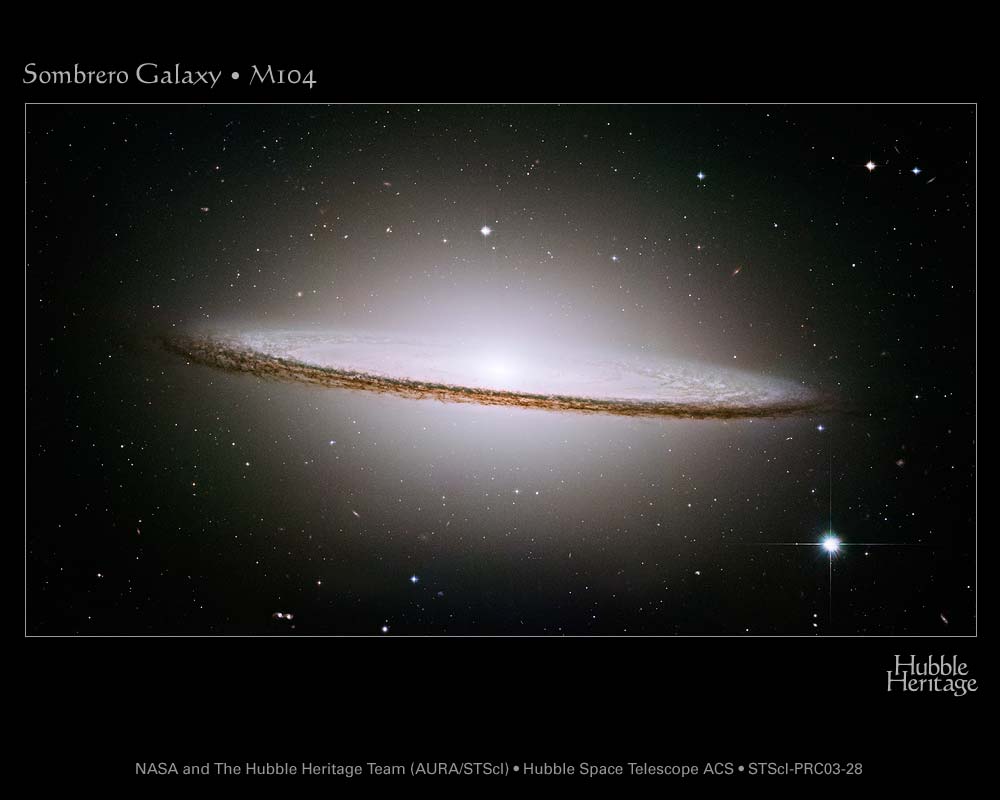
|
ASTRONOMY 386C Properties of Galaxies Spring 2002, 2009, and 2013
|
|---|

Click on the galaxy to go to the Hubble Heritage web site from which this image was taken.
Lectures mostly in Powerpoint .pptx format:
Lectures 1 and 2 (2009 html version)
Three-lecture general introduction on galaxy evolution (Powerpoint version)
A short general introduction on galaxy evolution (2013 Powerpoint version)
Our Milky Way galaxy -- 2017 summary of a 2016
IAP Paris conference in Powerpoint)
and in a pdf version.
Observed properties of elliptical galaxies (2013 Powerpoint version)
Observed properties of disk galaxies (2013 Powerpoint version)
Environmental secular galaxy evolution (2013 Powerpoint version)
Dark matter (2013 Powerpoint version)
Supermassive black holes - A short introduction (2013 Powerpoint version)
There will be 4 in-class exams; for example, please see the 2009 syllabus for what they will cover and
for how their relative weights will contribute to your final grade.
Homework grades will
provide the remaining 10 percent of your final grade. Preparation of
graduate-level lectures is like writing a review paper -- it is not
possible to predict exactly how much time it will take to cover each
subject and hence when each test will be. The first test will very
likely take place during the 5th lecture, and the last test will
certainly take place during the last lecture. Other test times
will be determined as we go. You will generally have at least one
week's notice.
Numerical grades will be converted to letter grades approximately
as follows: I may make small adjustments to the above, but I will not
make the scale more difficult. If you are
taking this course on a pass/fail basis, University rules say that
a passing grade is equivalent to a D or higher.
University of Texas Astronomy Home Page
Last update: February 17, 2017. Total visits since January, 2016 =
COURSE DESCRIPTION:
This course is an introduction to the properties of galaxies at the graduate
and postgraduate research level. It is intended mainly to provide an
understanding of the structure and content of galaxies and clusters of
galaxies and a good phyical understanding of how they got that way and
how they are evolving. As much as possible, subjects are covered in the
words and using the diagrams and images of the original authors that
derived the results. The course is intended to provide a thorough
introduction to the literature at the level neessary to conduct research.
Of course, time limitations mean that some subjects are covered in
greater depth than others. There will be a few homework exercises,
but on the whole, the emphasis is on a conceptual understanding of physical
processes in the context of the
"big picture", not on developing a facility in calculation. On the
other hand, understanding often depends on an ability to do simple
derivations at a heuristic level. An example is the demonstration
that the specific heat of an isolated, self-gravitating
system in equilibrium is negative. And what this means.
TEXTBOOK:
Galactic Dynamics by James Binney and Scott Tremaine, published by
Princeton University Press. For this course, either
the first or the second edition is OK. I will not assign specific
reading or exercises from the book, so the book is not required.
I will base some of the dynamical
derivations on the developments given in the book. You may want the
book to provide detailed discussions as alternatives to my lectures.
EXAMS AND GRADES:
A =
85 % or more
B =
84 - 75 %
C =
74 - 65 %
D =
64 - 55 %
F =
less than 55 %